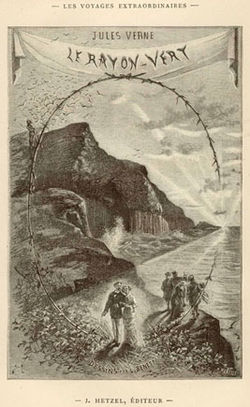 | |
| Author | Jules Verne |
|---|---|
| Original title | Le Rayon vert |
| Illustrator | Léon Benett |
| Language | French |
| Series | The Extraordinary Voyages #23 |
| Genre | Adventure novel, Science fiction [1] |
| Publisher | Pierre-Jules Hetzel |
Publication date | 1882 |
| Publication place | France |
Published in English | 1883 |
| Media type | Print (Hardback) |
| Pages | 128 |
| ISBN | 1-59224-035-6 |
| OCLC | 53822776 |
| Preceded by | Godfrey Morgan |
| Followed by | Kéraban the Inflexible |
The Green Ray (French : Le Rayon vert) is an adventure novel by the French writer Jules Verne published in 1882 and named after the optical phenomenon of the same name. It is referenced in a 1986 film of the same name by Eric Rohmer.


